Chapter Two: after Jütland
Jütland’s influence
One cannot simply ignore the greatest naval battle of the industrial age in a design story. Especially that this epic clash of titans had a very profound effect on the design of HOOD and all the subsequent capital ships built around the World. I don’t want to repeat the well known story of the battle, instead I’d like to focus on points that directly impacted our story – some hopefully new ones.
January 1915 saw the first major sea engagement of the Great War that had approximately equal sized forces on both sides. Adm. David Beatty’s 5 battlecruisers went up against Adm. Franz Hipper’s 3 battlecruisers and 1 armored cruiser. Although the battle ended with the German fleet fleeing and the relatively slow BLÜCHER badly mauled and somewhat later sunk it still was not a dominant victory for the British side. The high military value big German battlecruisers got away, badly damaged as they were. The primary conclusion for Beatty was that his own ship’s rate of fire was not good enough and faster firing would have allowed more damage to the enemy, slowing them down much more, allowing him to close to killing distance. According to the ammo handling policies changed early in the war (much to the advise and recommendation of Beatty and Jellicoe himself) British ships took on more ammunition that they could fit into their magazines. This was to mitigate the risk of running out of ammo due to long range firing early in a battle, that potentially would be a waste of shells due to low hit probability – though one lucky, early hit could be decisive later on.The extra cordite charges were stored in the ammo handling spaces right below the turrets and in the back of the mountings as well. In order to protect the charges somewhat they were normally stored in fireproof cases, called Clarkson’s. These cases were removed only right before the charges were used up, that is loaded into the breeches.

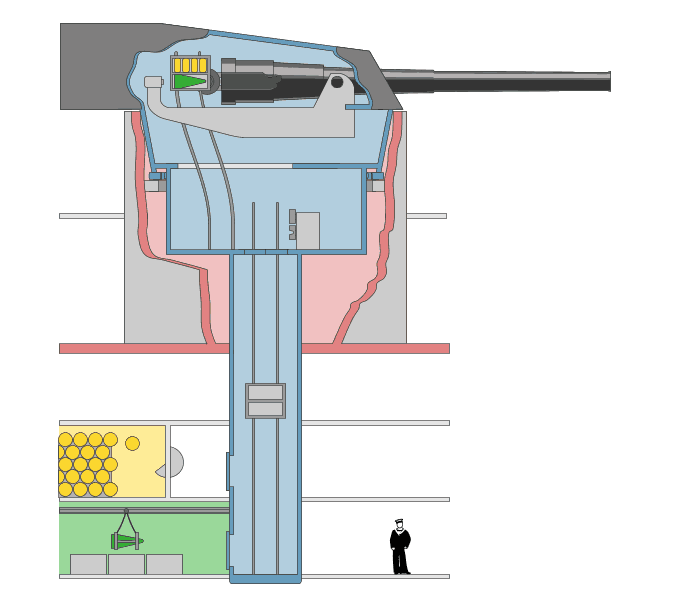
Due to this the Clarksons piled up during battle and clogged the path of ammo from the below magazines. Beatty therefore further recommended (with the consent and approval of Jellicoe) to his ships, the battlecruisers that the extra charges should be loaded into the turret’s without their protectors! Furthermore the recommendation advised to remove the flash and fireproof doors from the ammo handling spaces and magazine openings, essentially making the whole turret and barbette one giant ready use locker that could be quickly reloaded from the magazines. Beatty’s ships, with the exception of LION all followed suit and entered the battle in this condition.

The Battle of Jütland started similarly to Dogger Bank, except that both scouting forces had their entire battlefleet behind them as back-up. Actually Beatty was lucky enough to have the entire 5th Battlesquadron, that contained 4 QUEEN ELIZABETH class super-dreadnoughts, with him in exchange for a battlecruiser squadron he loaned to Grand Fleet for some training. In the first part of the battle the British side immediately took a huge blow: both battlecruiser INDEFATIGABLE and QUEEN MARY exploded and sunk from just one single hit, barely leaving survivors. It was pretty obvious in both cases that the magazines went off, leading to catastrophic hull damage and instantaneous sinking. Actually Beatty’s own flagship, LION barely avoided the same fate as she was hit on the top of her ‘Q’ turret as well and a resulting fire set off some charges as well. It was only thanks to the turret captain’s quick reaction that he flooded the magazine which in turn prevented the doom of the ship (the turret roof was still blown off by a smaller explosion and it was knocked out of the fight). Later in the battle a third battlecruiser, the first such ship to enter the water, HMS INVINCIBLE ended in the same fate due to hits from LÜTZOW and DERFFLINGER. There were more similar cases during the battle, but these are the most prominent ones and impacted the highest military value ships within the British Fleet (except perhaps the QEs).
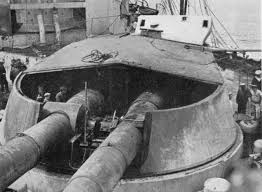
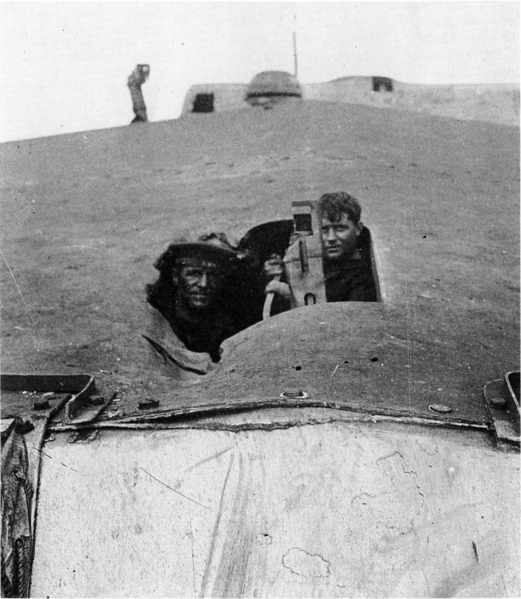
Right after the battle an investigation was started. The DNC, Sir Tennyson d’Eyncourt arrived on scene and had a look at the damage received by the surviving ships. Concurrent with this a committee led by Beatty and Jellicoe looked into the reasons of magazine explosions. Predictably a finger pointing started at each other; everyone can decide for themselves who was right in light of the above and following information.
The two admirals acknowledge the risks of cordite fires and they soon started to look for other explanations and came up with somewhat made up solutions. They wanted to somewhat get out of their earlier recommendations made to the fleet as they knew full well that they had a hand in the state of their ships upon entering battle. Beatty soon came up with the plunging fire explanation, that is according to him the Germans opened fire from farther out compared to previous battles and the steeply falling shells penetrated the relatively thin deck armor of the battlecruisers. Actually this explanation holds up pretty well even today, especially in the less technical circles and sometimes the obsolescence or failure of the battlecruiser type is based on this very example.
Interestingly enough the DNC’s opinion is ignored (maybe even covered up) in almost all of these explanations, though he was the technical guy after all. Of course there is a political background to this and the two senior officers further career depended on it – Jellicoe became First Sea Lord right after the battle and Beatty took over his role as C-in-C Grand Fleet. In my opinion though D’Eyncourt very objectively and carefully analysed the damage and wrote his report, using factual evidence. The first major point was that actually very few hits were on the decks, be it battleships or battlecruisers, even above machinery spaces which were far larger in area compared to magazines and were located in the central, wide part of the ships that were more likely to get hit due simply to it’s larger area. Furthermore the few deck hits that he registered all showed very shallow and long impacts and the shells shattered or exploded right on penetration: the resulting splinters were easily caught by the bulkheads further inboard. It is worthy to note here that the Germans used AP shells exclusively. These had very good penetration capabilities but due to their small caliber (11-12″) had fairly small bursters, so even a direct hit had very localized effect. In contrast to this the British used both AP and HE shells, the later doing the real damage to upperworks as the AP shells tended to fuze to early and burst on impact or did not burst et all leaving only the kinetic energy to do the damage.[1]
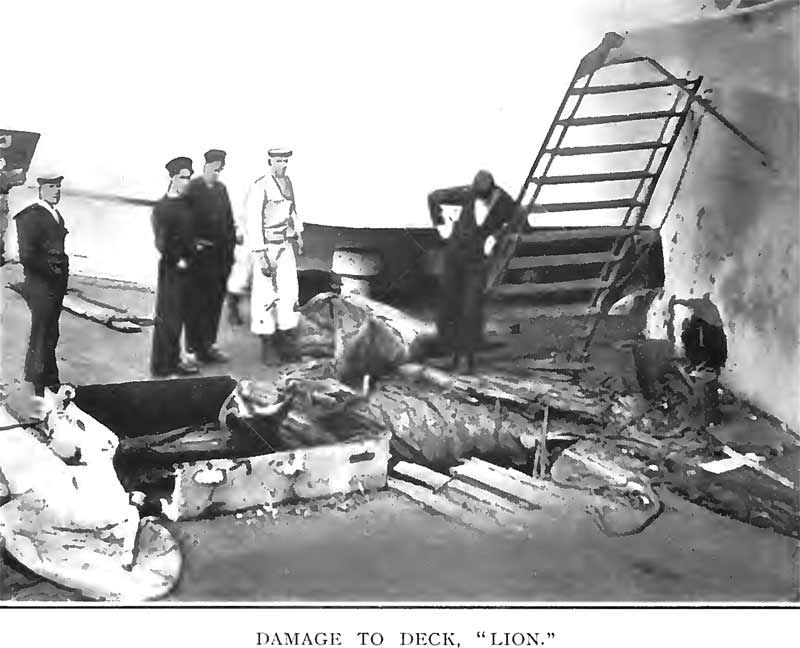
DNC concluded (like his predecessors 10-12 years earlier) that the capped AP shells could penetrate even fairly thick plates so in the armor vs guns race the latter was winning. TIGER’s 9″ belt was the thickest vertical plate penetrated at Jütland but again it is worthy to note that this was done by the 11″ or 12″ guns of the German fleet which were literally pea shooters compared to the 15″ behemoth fielded by the QUEEN ELIZABETH and R class battleships. Therefore according to DNC the armor should be looked at as an external layer that sets off AP shell fuzes and make them burst – the resulting splinters should be stopped by the internal bulkheads. He had an early form of layered protection in mind. He argued as well that with firing ranges getting ever longer the number of hits would decrease and the distribution will be in favor of deck hits. It is to be noted however that with the caliber escalation this was somewhat counterbalanced, as the bigger guns had a flatter trajectory at a given range.
Barbettes and turrets were a tough cookie though as there was no room for spaced armor or any form of meaningful layered protection. To DNC it was pretty obvious from LION’s and TIGER’s ‘Q’ turret top damage that the three doomed ships got the devastating hits right on their turret tops as well. These plates were only 1″ thick on INVINCIBLE and INDEFATIGABLE, furthermore both were angled down a bit on their front parts which further decreased their protective value as it offered a better impact angle. After penetrating these 1″ armor plates (which the high muzzle velocity German 12″ guns were easily capable of at the ranges they fought at Jütland) nothing and literally nothing stood in between the piled up charges and the exploding shell. The red hot splinters ignited the cordite all around and the ever increasing speed chain reaction built up enough gas pressure in the confined spaces of a turret to blow of the roof in case of LION and to rip apart the whole ship in case of the 3 ships sunk. There the flames found their way quick enough into the magazines deep in the ship to further expand the chain reaction. Removing the Clarkson cases and de-installing the flame proof doors certainly helped a lot in that.
Exactly due to this DNC was inclined to use the thickest possible armor on turrets and barbettes at least and it is one of the reasons he was committed to redesign HOOD completely. He did not advertise the uselessness of thick armor openly, probably due to Jellicoe being the First Sea Lord by that time and probably because his views changed somewhat on the matter as well after the shooting test after the war.
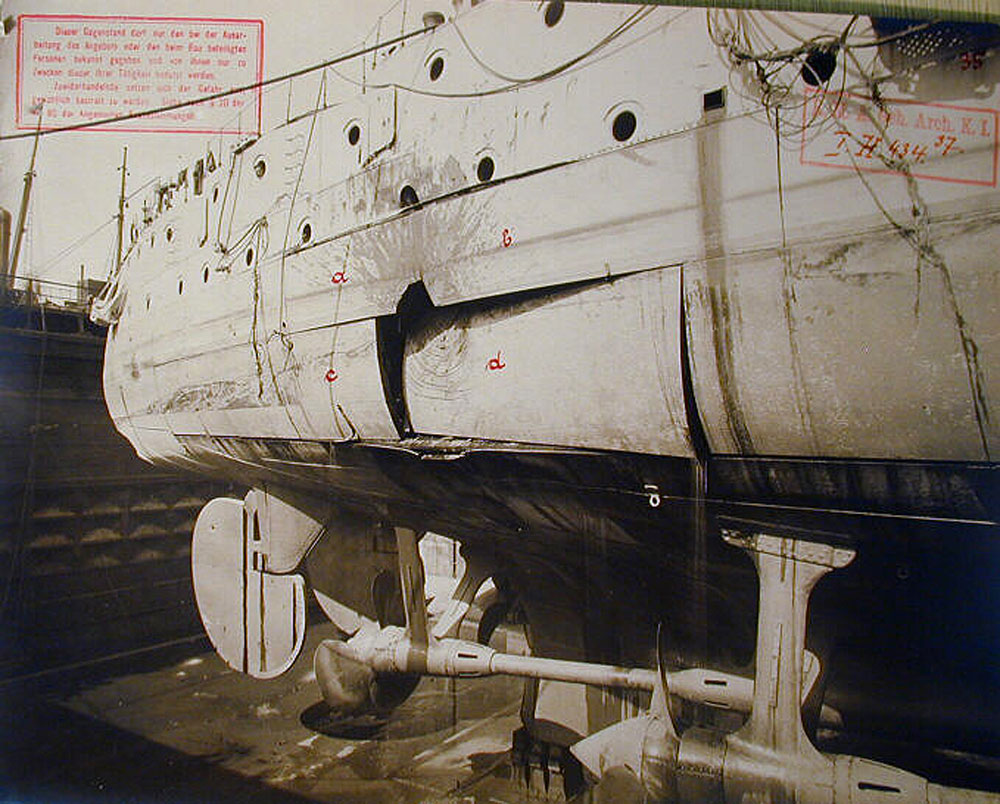
In summary we can say that a lot of theories and half-truth came to light ever since but it is safe to say that the relaxed ammo handling policies and practices played a key role in the destruction of the British battlecruisers. LION’s case shows that playing to the safe rules payed out as the turret captain had enough time to flood the magazines before the increased pressure could bulge the magazine doors. However we won’t be fair without saying that although the British lost more big ships the damage to surviving German ships was generally worse than surviving British ships. simply the bigger British shells had literally more impact, even if their fuzes did not work properly.
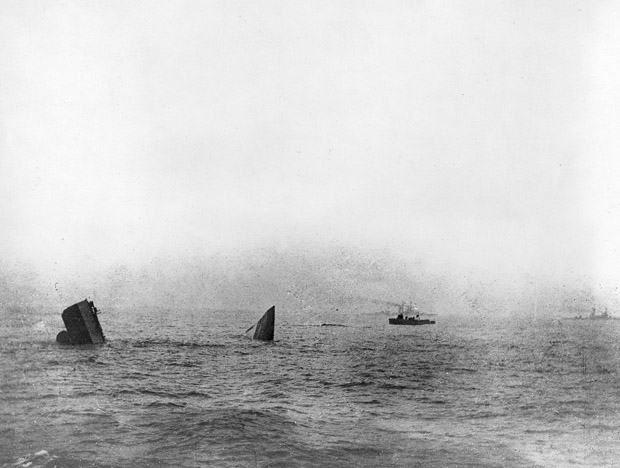
In any case Beatty’s theory (real or fictional it may be) that the battlecruiser’s thin armored decks were their Achilles heel had long lasting effects. This theory got wide publicity (in contrast to DNC’s report) and impacted not only public opinion but naval design as well. From then on all ships under building or design had it’s deck armor increased and capital ship design theory took on an approach that in the future very great fighting distances an very steeply falling shells will be the main threat. This in turn lead to the cancellation of HOOD’s sisterships well after the war. As a consequence of this the Admiralty sat down to the conference table in Washington that 3 of their most potent ships were relegated to the scrappers torch and all that they had in hand was HOOD and some very nicely sounding designs – on paper.
HOOD and the ADMIRAL class ships
The laying down of HOOD happened exactly on the day of battle, 31st May but construction was halted and a redesign initiated. It focused on massively increasing the armor of the ship but it also needed re-laying, so the following construction schedule resulted:
HMS HOOD – 1st Sept. 1916; John Brown shipyard
HMS ANSON – 9th Nov. 1916; Armstrong Whitworth shipyard
HMS HOWE – 16th Oct. 1916; Cammel Laird shipyard
HMS RODNEY – 9th Oct 1916; Fairfield shipyard
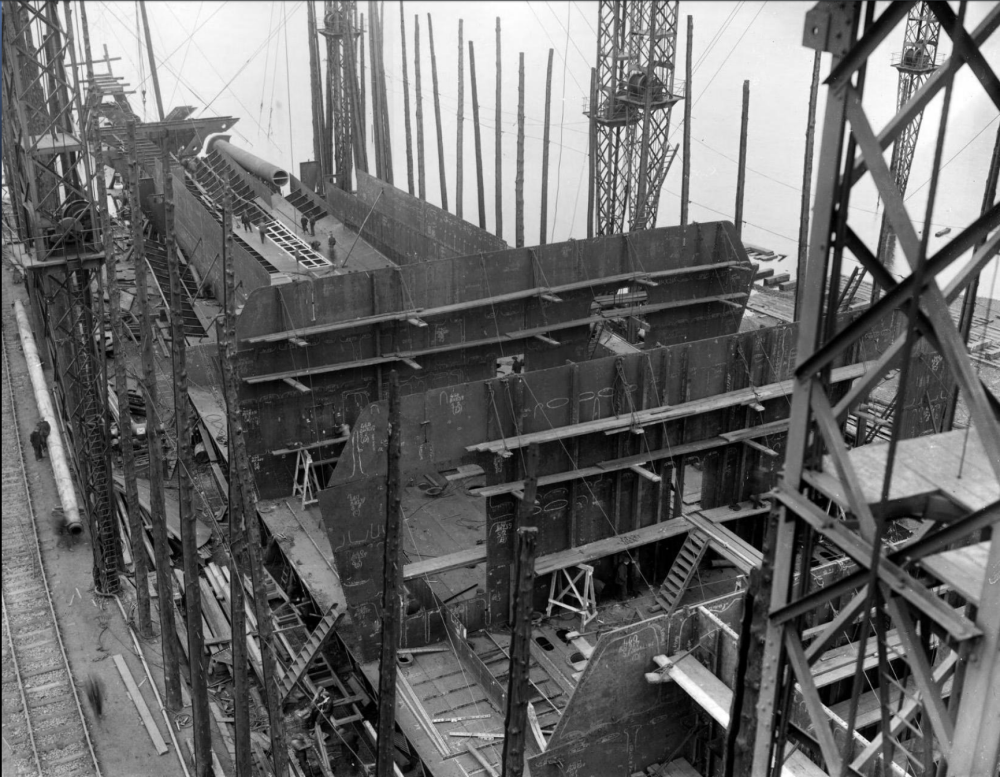

The armament for all 4 ships were ordered at this time, 2 sets from Vickers and 1-1 from Armstrong Whitworth and Coventry Ordnance (1 set constituted of 8 pieces of 15″/42 Mark I guns and 4 two gun turrets with all their machinery). One of the Vickers sets were to proceed with peacetime tempo, the other three were to progress slowly according to the contracts.
DNC was not too fond of the redesign as it mainly concerned the strengthening of armor protection and shifted away focus from the excellent underwater protection that used to be the main focus of the design. The extra armor meant extra weight (a lot) and that in turn increased submersion and the size of underwater target while at the same time reserve buoyancy decreased, both factors massively subtracting from the effectiveness of the defense system. In defense of Jellicoe (who ordered the redesign) this underwater protective system was fairly new and was not combat tested yet – plus the fresh Jütland experience did not indicate any extra vulnerability against underwater weapons, all heavily damaged or sunken ships succumbed to gunfire.
This new torpedo defense system integrated the bulge into the hull’s cross sectional contour, in contrast to earlier ships where the bulge was retrofitted onto the original hull plating. The bulge was split into 3 parts by two longitudinal bulkheads and the middle part was filled up by small diameter metal tubes. Tests and calculations showed that these tubes would soak up the energy of an underwater explosion. On paper the system could withstand the explosion of a 750 lb charge which was more than any existing torpedo warhead at that time. The system as a whole was performing at the level of the 5-layered American TDS (see Cherry Trees I.) while it took up less space and was lighter. On the negative side it was more expensive, more complicated and time consuming to install and probably battle damage repair would have been more difficult (HOOD never got underwater damage so we do not know this for a fact).

As a good subordinate though DNC complied and in august 1916 he realized the first step in the redesign with the 8″ belt raised by 1′ in height and the upper plating reduced to 3″ only but he put an armored splinter bulkhead behind the main belt (20′) . It turned out however that with fairly minimal changes the design could take on much more armor and weight so in the end only 1 knot of speed had to be sacrificed due to the deeper drought – a testimony to the designers of the hull shape.
The vertical armor was hugely improved in essence turning the battlecruisers into a battleship with the level of protection seen and surpassed only on the most modern R class battleships.
A high level overview of the main changes:
- main armor belt increased from 8″ to 12″
- the citadel armor above the main belt increased to 6″ then 7″
- the uppermost row of side plating increased from 3″ to 5″ while still keeping the 12 degree inclination of the belt and upper belt
- barbettes going from 9″ to 12″
- horizontal protection was increased as well from 1.75″ and 1″ to 2″ uniform on the forecastle deck
- main deck over magazines increased from 2″ to 3″
- aft deck from 1.5″ to 2″
- main battery turrets had their roofs increased from 4.2″ to 5″ and their faceplates from 13″ to 15″
The increased weight of armor was not compensated for in any form so all other aspects of the ship remained the same. The net weight increased by 3.000 tons to a standard displacement of 40.500 tons while speed fell to 31 knots.


DNC got so enthusiastic with the results that he suggest to Controller (Third Sea Lord) that these ships to be built as alternative or concurrent battleships alongside the original battlecruiser design. Controller asked back if the design could take triple turrets. DNC complied and presented three alternatives, one with 4 triples (2500 tons addition), one with two triples and two twins like in NEVADA (1100 tons) or 3 triples (900 tons). The main problem with the triples was that the hull contour below waterline was too fine to house the larger magazines required to house 100 rounds per gun as the standard required. 80 rpg was the best he could provide. According to Controller a battleship needed more guns and better armor instead of speed so these designs were not officially labeled as such and were not detailed in the end.
The final plans were approved by the Admiral Staff at the end of 1916, it contained all the armor changes listed above plus an additional pair of above water torpedo tubes, with displacement coming in at 41.000 tons.
Approximately this was the point where HOOD and her sister’s design process diverged as John Brown got an order from Admiralty to expedite HOOD’s completion as fast as they possibly could with launch planned for November 1918. At the same time though the three other yards have been informed to slow down construction to the point where existing structure is maintained but no further work is done. This decision was probably made as only one set of armament was nearing completion and that resources for anti-submarine and cargo ship construction was prioritized.
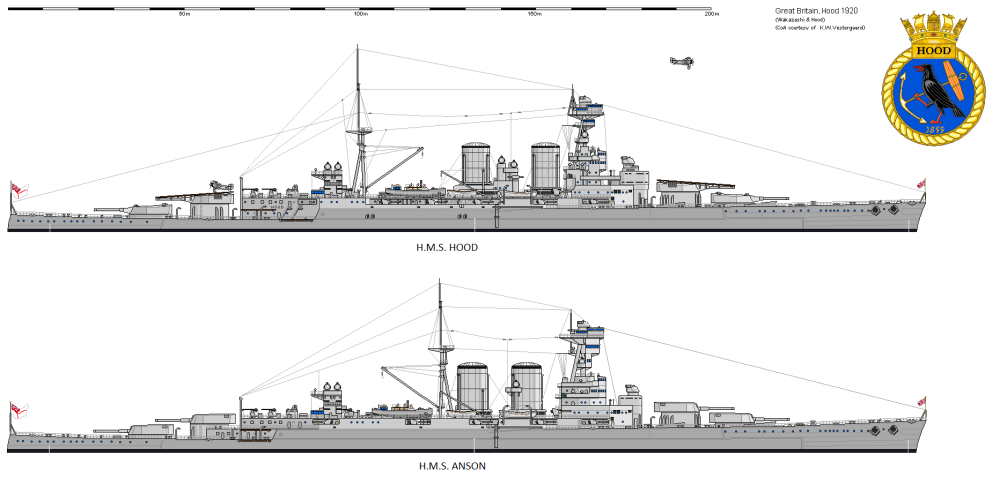
Interestingly enough the design process did not stop for the sisters (HOOD was now too advanced to incorporate any major change). Therefore these ships are usually referred to as ADMIRAL class battlecruisers. They differed on three major points from their more famous sister.
First and foremost the position of magazine and shell room were changed with magazines going down to the lowest level and shell rooms coming in above them. All earlier British ships had the shell rooms at the lower level due to it’s much heavier weight and also to offer some underwater protection to the cordite charges. In reality though hot fragments from a hit could more easily reach the charges in the magazine this way and ignite them. Whereas if these fragments hit the very thick steel walled shells they could probably only damage a few of them but even then a detonation was very unlikely. It was just logical then to change their positions though this brought up underwater vulnerability of the magazines. Some scale model tests that even accounted for wave motion of the hull proved however that any underwater damage would allow in more than enough water to immediately douse any fire that might occur, mostly negating the risk. One issue remained however, namely that the hull contour was so fine aft that the aftermost ‘Y’ turret simply did not have the space for the desired change. Later (Sept ’18) it was decided to incorporate the change for all turrets by changing the hull shape, the cross section becoming concave from convex at the top of the bulges so that it could accomodate more space aft in the ship. This change also entailed further armor additions: the upper belt went from 7″ to 10″, the lower part of ‘Y’ barbette increased from 2″ to 4″, the deck armor above magazines from 1″ to 2″ and the main deck around the barbettes from 1″ to 1.5″-4″ depending on it’s exposure and proximity to other armored surfaces. This extra armor weighed in at 258 tons which was compensated for by eliminating 258 tons of armor from aft of ‘Y’ barbette, some internal bulkheads and the main belt.
The second major modification was more obvious in appearance as it concerned the shape and location of superstructure items. Before the age of radars and other advanced techniques of surveillance the course of a ship could be extrapolated from the distance of the masts. In order to make this method much more difficult many British ships had their mainmasts omitted or massively cut down. On the ADMIRAL class due their extreme length it was an especially obvious reference point to check for any observer so it was decided to move the mainmast right abaft the funnels and it was turned around 180 degrees so it’s boom now faced aft and the tripod’s support legs forward. The two funnels were moved much closer together and the searchlight tower between them was omitted, with the searchlights moved to small galleries on the side of the fore funnel and to the aft superstructure.
An even more substantial change happened to the bridge structure with the humongous armored conning tower of HOOD replaced with a much smaller, compact and lightly protected structure and the admiral’s bridge relocated. This way the base structure could be lowered one level. To compensate the admiral an extra platform was added on the top of the fore tripod, right below the foretop. These changes gained back 220 tons direct weight: in exchange the rheumatic admiral had to climb up 30 feet regardless of the weather.
Finally some other armor chnages have been made, especially concerning the turrets which were of a new mark with a different shape, a more square one compared to HOOD. The turret roof got up to 6″ in thicknessi n the end. Also the boat deck was widened to cover the 5.5″ gun positions more offering some form of splinter protection to them.
In August 1918 DNC argued already that it is time to stop further changing the design as it was increasingly looking like a patchwork with already an extra 5000 tons weight and 3 feet of draft gained. In his opinion they were creating a mule design with this aim to bring up a 2 years old base concept (that hardly advanced in construction) to comply with the latest and greatest weapon standards and technologies. The original hull was simply outgrown by the design’s progress.


In light of the above it is easily understandable why cancellation of the then HOWE named class came around in March 1919. It was much easier and logical to start afresh instead of doing redesign after redesign while still standing in line with the limitation of the original base concept and swallowing all the extra expenses in the process. Not to mention that the three yards were complaining louder and louder that their best slipways are tied up with half complete, rusting hull torsos. The name sake HOOD was the only one that still got some minor further changes to her armor, the last in october 1920 but by that time she was essentially complete and any further modification was just an afterthought that might do more harm than good.
In the years following the Great War the United States Navy was the only force that could be a challenger to the battle hardened Royal Navy. Since the cancellation of the HOWE class meant that for at least 5 years after the commissioning of HOOD the Royal Navy will be without a new capital ship some contingency plans were looked at. It came up to modify the two RENOWNS with an additional turret, changing the boilers to small tube ones. However neither this nor the earlier mentioned triple turret half battleship variants of the HOOD design were chased further.
Due to the existence of HOOD the Royal Navy had the most modern capital ship in the Treaty-era up tho the late ’30s and even in-house only the more modern NELSON class ships surpassed her in certain aspects almost a decade later. HOOD is often referred to as an outdated, obsolete fleet unit, however thanks to her strengthened armor and high speed she was a formidable opponent with massive firepower that could take on any opponent and as such was probably the highest military value unit in the RN until the KGV class arrived in 1940. Among the capital ships of the world with an incremental armor scheme she had the best deck armor (!) and the most thorough splinter protection quite probably up until BISMARCK.
Unfortunately even this was not enough to avoid her predecesor’s Jütland style doom, however not in a way that Beatty envisaged. An AP shell from a generation much more modern than existed at the time of her design penetrated all the elements of her vertical protection and entered into her after magazine. The range where the hit occured was barely more than the ranges in the famous battle of her ancestors: d’Eyncourt was quite probably closer to the truth.
[1] According to an anecdote in a British officer’s note: even 50 hits in the machinery spaces of a KAISER class dreadnought would not have slowed it down, so bad were the British shells on that day
Much of this is quite good but the stuff about Clarkson cases all over the place and powder bags stored everywhere is not the case. Lion was never in danger of blowing up either. Simply incorrect.
LikeLike
Hi Ian,
first of all thank you for the comment, much appreciated. I’ve used Friedman’s The British Battleship and Campbell’s Jutland: An analysis of the fighting as my references (full list of rreferences at the end of part 3). Based on what I read there it might not be the case for LION regarding the Clarkosn’s but the other ships quite probably fell victom to this. It is subject to debate if LION was in danger of blowing up or not based on what is written by Campbell’s book on page 66, as the damaged Q turret probably vented enough of the cordite explosion but he mentions in the middle of the page quote: “If the magazine had still been ioen, the LION would, without any doubt have followed the INDEFATIGABEL and QUEEN MARY.” Your interpretation would interest me if you are willing to share. Regards: Akos
LikeLike
The key word is if. It was closed and had been flooded.
LikeLike
Nice article.
Just to clarify:
In the photo of the damage to the center, front roof of HMS Tiger’s “Q” turret, the item between the matelots’ heads is part of the optical observation system, which lives under an armored hood (which has obviously departed it’s location!)…not the “centerbeam of the turret.”
Thanks again for the interesting content…keep up the good work!
LikeLike
THanks for the comment, I’ll correct it! Good catch!
LikeLike